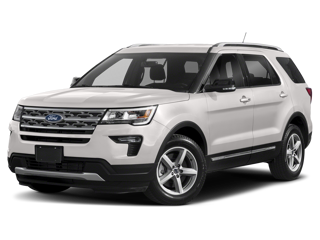Fully Automated Cars… How Close Are We?
A reality check and the automated vehicles that are already on the road.

JUST AROUND THE CORNER
A quick survey of television and online news – CNN, CBS, FOX, The New York Times and others – allude to the promise that fully automated cars are just around the corner. Of course, the media likes a high-tech, futuristic story, but how real is it? When will the proverbial rubber of fully automated vehicles meet the road?
To be fair, there are cars on the road right now with automated features allowing them to steer, brake and accelerate automatically, but they still require a human behind the wheel. Test deployments are underway in Las Vegas, Maryland and Miami where an electric, driverless shuttle bus named Olli (localmotors.com/olli/) is operating on a fixed route. The French company NAVYA (navya.tech) operates a similar slow-moving vehicle in Europe, Australia and Las Vegas. Those highly specialized vehicles cannot handle all driving situations, and manufacturers disavow any claims of letting them perform self-driving tasks on public roads.

Are Silicon Valley, Wall Street and Detroit filling the public’s gas tank, but there’s nowhere to go? Has the hype sped past the reality? Let’s take a look.

The Great Promise & Life Saving Potential of Automated Vehicles
Driver error represents the single most important issue in understanding car crashes. Organizations concerned with public safety are excited about automated vehicles because 94 percent of crashes are the result of human error. Automated cars don’t get distracted, don’t get drowsy, don’t speed, don’t have a third glass of chardonnay and they obey traffic laws. Other groups also eagerly await the era of automated vehicles — seniors and the disabled will be afforded a new level of independence.
Without a doubt, cars of all shapes, sizes and costs are hitching a ride on the car tech express. You need not spend $95,000 to enjoy cars that start themselves, stop themselves and monitor weather or local speed limits. Some even offer a 360-degree view while backing and alert you if you might be drowsy. There are more than 35 active safety features available which may help prevent a crash. These are cause for excitement. It’s estimated that one of those technologies, automatic emergency braking (to be included in most cars by 2022), will save thousands of lives. Many of these features are available at an affordable price.
SO HOW CLOSE ARE WE? NOT AN EASY QUESTION, BUT HERE’S AN UPDATE.
TODAY
Slow speed, fixed route, automated vehicles are here in the form of shuttles and people movers such as Olli by Local Motors.
1- 5 YEARS
Fully automated vehicles will be operating among us if you believe automakers and popular media. GM has proposed to deploy self-driving cars in 2019 as part of a ride-share service in a dense, urban market.
5-20 YEARS
There will be great advancements, but many of us will still have our old, non-automated cars. The infrastructure and GPS network must be built and refined.
20-25 YEARS
Cars are lasting longer, requiring 20-25 years just to replenish the fleet on the roads today. Just the transition period from getting older cars off the road could take a generation or two with lots of bumps along the road.

The Name Game
FOOTNOTE: Before we go further, let’s analyze the different names used for these vehicles of the future. Are they self-driving vehicles, driverless vehicles, autonomous vehicles, semi-autonomous vehicles or fully autonomous vehicles? How about none of the above? According to SAE, the Society of Automotive Engineers, these new cars are to be called “Fully Automated Vehicles.”
How could there be such a vast disparity regarding the timeline? Competing interests and venture capital could have something to do with it, not to mention geography. The federal government has set a policy hoping to avoid a national patchwork of laws and infrastructure for automation. Yet certain states or cities might have the will and the resources to adapt faster than other regions. Otherwise, a driver might be stuck with a car that drives itself perfectly in his or her own town or county, but leave that region, and the driver must revert to being a fully focused driver.
Can You Say Infrastructure?
The “just a few years away” timeline could be justified if automated vehicles depended solely on onboard radar and sensors. But they don’t. Some experts feel that one car, no matter how smart, can’t be expected to do everything. So designers and governments must also focus on the surroundings and the ability of cars to speak to each other. This is known as “vehicle-to-infrastructure” and “vehicle-to-vehicle” communication – much like the radio transponder signals sent out by every plane in the sky. This will be costly and require great leaps for traffic and highway engineers. One of the biggest obstacles facing tech companies and car companies is the vast variety of driving environments: Cities, suburbs, rural, flat, hilly, snow, fog, paved, gravel. For automated vehicles, high-definition maps are a new kind of infrastructure that is not part of the traditional roadway environment. These “HD” maps allow the car to know precisely where it is with regard to lane position, intersections, curves, etc.
SO WHERE ARE WE TODAY?
Car makers are racing to the future. Most are developing safety technologies that require very little driver input. Thousands of cars can automatically maintain a safe following distance with the car in front. Cars can steer, slow down and stop by themselves. They can help center you in the lane. But a safe, reliable car that can drive itself AND play nicely with everything else on the road does not yet exist outside of the testing environment. Training and education for drivers with these new features is limited. MyCarDoesWhat.org offers deep learning and quick tips about this new technology – a “learning bridge” to the future.
When will automated vehicles populate our roads? That is not an easy question to answer, but it’s safe to say that a wide-scale release of fully automated cars to the typical American driver is not just around the corner.
Content Source: MyCarDoesWhat.org





